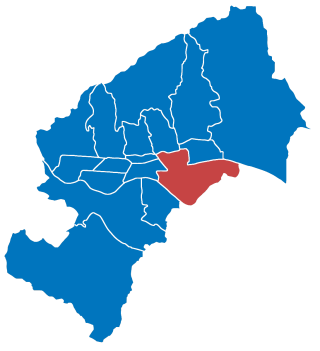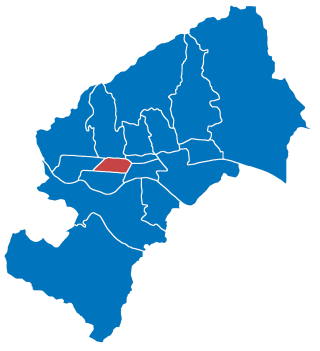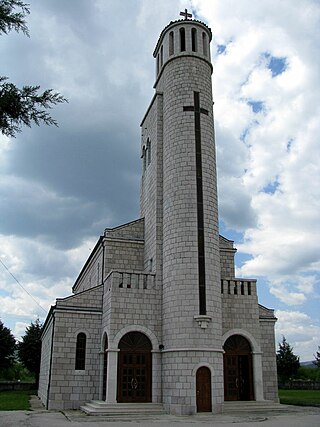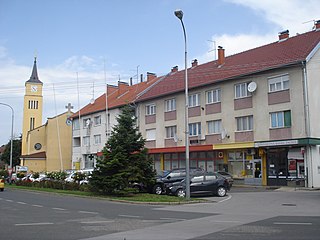
Varaždin County is a county in Hrvatsko Zagorje. It is named after its county seat, the city of Varaždin.

Rovinj is a city in west Croatia situated on the north Adriatic Sea with a population of 14,294 (2011). Located on the western coast of the Istrian peninsula, it is a popular tourist resort and beach destination, in addition to being an active fishing port. Istriot, a Romance language once widely spoken in this part of Istria, is still spoken by some of the residents. The town is officially bilingual, Croatian and Italian, hence both town names are official and equal.

Peščenica – Žitnjak is a city district in the southeastern part of Zagreb, Croatia. It consists of two parts: Peščenica, a set of neighborhoods; and Žitnjak, a large industrial zone on the city outskirts, and has a total population of 56,487.

Maksimir is one of the districts of Zagreb, Croatia, population 48,902. Maksimir stadium and Maksimir Park are located in it. It was named for Bishop Maksimilijan Vrhovac.

Tovariševo is a village in Serbia, in the Autonomous Province of Vojvodina. The village has a Serb ethnic majority and its population numbering 2,321 people.

Gornja Dubrava is one of the districts of Zagreb, Croatia. It is located in the northeastern part of the city and has 61,841 inhabitants.

Donja Dubrava is one of the districts of Zagreb, Croatia. It is located in the northeastern part of the city and in 2011 had 36,363 inhabitants.

Trešnjevka – sjever is one of the districts of Zagreb, Croatia. It is located in the western part of the city and has 55,425 inhabitants according to the 2011 census.

Petrinja is a town in central Croatia near Sisak in the historic region of Banovina. It is administratively located in Sisak-Moslavina County.

Donji Lapac is a settlement and a municipality in Lika, Croatia.
Voćin is a village and municipality in western Slavonia, Croatia, located southwest of Slatina and east of Daruvar. The population of the municipality is 1,911, with 956 people living in Voćin itself.

Tisno is a town and municipality in Šibenik-Knin County, in southern Croatia.

Dicmo is a municipality in Croatia in the Split-Dalmatia County.

Dugopolje is a village and a municipality in Croatia in the Split-Dalmatia County.

Dubravica is a municipality in Zagreb County, Croatia. According to the 2001 census, there are 1,586 inhabitants, absolute majority of which are Croats.

Donja Dubrava is a village and municipality in Međimurje County, Croatia. Donja Dubrava is the only village within the municipality. According to the 2011 census, the village had 1,920 inhabitants, mostly Croats.

Donji Vidovec is a municipality in Međimurje County, Croatia.
Crevarska Strana is a village in central Croatia, in the municipality of Gvozd, Sisak-Moslavina County. Between 1953 and 1971, the village was known as Vladimirovo. It is connected by the D6 highway.

Srijemske Laze is a village in Stari Jankovci municipality of Vukovar-Syrmia County in eastern Croatia. The village is physically connected with the village of Slakovci. According to 2011 census there is 566 residents in the village. The largest ethnic group in the village are Serbs of Croatia. The village is connected with the rest of the country by the D46 state road connecting it with the town of Vinkovci and continuing into Serbia as the State Road 120 to the nearest town of Šid. Surrounding landscape of the village is marked by the Pannonian Basin plains and agricultural fields of corn, wheat, common sunflower and sugar beet.

Drežnica is a village in Croatia near the town of Ogulin. During the SFR Yugoslavia era, it was known as Partizanska Drežnica due to the village having a Yugoslav Partisan base during the Second World War.


















